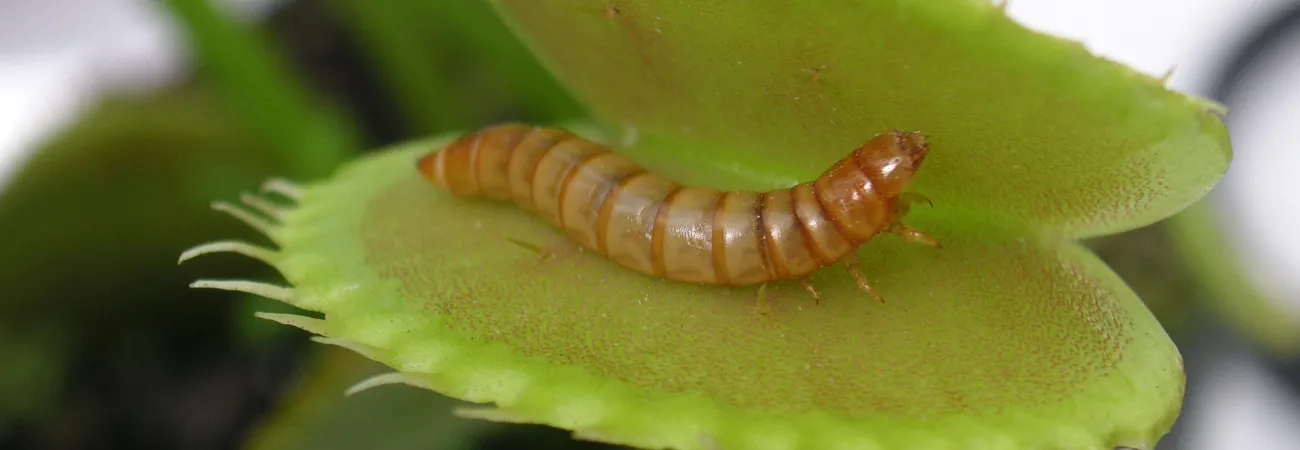i ECONOMY
Pakistan can leverage its economy by starting mealworm farming to generate revenues and work opportunities. “Globally, mealworm farming is a regular and profitable business. Pakistan needs to also develop this type of farming to leverage its economy,” said Dr Ihsanul Haq, Programme Leader of Insect Pest Management Programme of the National Agricultural Research Centre (NARC). In an interview with WealthPK, he said mealworm is used globally for environment cleaning or biodegradation. “Mealworm is found in the wild in Pakistan, but it takes time to colonise. The life cycle of any insect depends upon the humidity and temperature levels. At high temperatures, the life cycle completes in a short span, between 25 to 35 days,” he said, adding some people had started rearing mealworm after importing the species. However, he said NARC has started a research programme regarding pests and insects commonly used for pet feed, including mealworms. He said large-scale production of mealworms is investment-intensive. By-products of mealworms like chitin, faeces and oil are also valuable. To develop its market, awareness is necessary.
Umar Ali, Chief Executive Officer of a Lahore-based mealworm farm, told WealthPK that mealworm is easy to handle and multiply. “Normally, it eats wheat bran and vegetables, which are easily available in the market. We are developing its seed. Each larva is sold for Rs30 with a tray containing about 10,000 worms priced at Rs300,000. With an increase in its production, its prices will be decreased.” He said both fresh and dried mealworms are imported as pet feed, which is hugely expensive as one kilogramme is sold at Rs8,000. Ali said mealworms are a nutritious food for farm animals and birds. “Normally poultry farmers feed their birds with the remains collected from slaughterhouses or with the dead birds’ shredding. Rather than this unhygienic feed, the 10 to 15% addition of fresh or dried mealworms in their regular feed is far better,” he said, adding that due to the nutritious value of mealworms, the European Union has approved adding them to dietary supplements. “In some countries, they are a regular part of food.”
He said mealworm-added food supplement weighing 2kg is about worth Rs10,000. “The oil extracted from dried mealworms and their remains is used at a large scale in the culinary, pharmaceutical and cosmetic industries. Faeces produced from mealworms are used as frass fertilizer, a natural insecticide.” Ali maintained that insect rearing is technical, but anyone interested in it could learn it within two to four months. “This business can be started in a small room with an investment of Rs5,000. To produce three kilogrammes of mealworms, 2kg wheat and 1kg vegetable is required.” He added that about 1,000 worms can be multiplied by 200,000 within four months. “Mealworms can be dried manually or through a microwave oven.”
Sharing his views with WealthPK about the life cycle of mealworms, Muhammad Bilal, manager of a mealworm farm in Lahore, said basically, mealworms were the larvae of a darkling beetle species, Tenebrio Molitor, which is a holometabolic insect that goes through a complete four-stage life cycle (egg, larva, pupa and adult). “The egg life is from 10 to 20 days. Normally, eggs hatch in 10-12 days into tiny larvae. From 12 to 60 days, mealworm larvae gain a size of 1.25 inches and 7,000 larvae weigh approximately one kilogramme. After that, they are grown into a pupa taking 20 days to mature and become a beetle.”
“The total lifespan of a beetle is 80 days. Approximately, 70% of the hatch from eggs comprises female beetles. During the whole lifespan a female beetle lays an average of approximately 400 eggs. The ideal rearing temperature required for all stages is 24⁰C and the humidity level for eggs, larvae and adults is 45-50% except pupa, which requires a 60-90% humidity level. Both larvae and adults relish eating vegetables like potatoes and carrots except pupa,” Bilal explained. The global mealworm market is projected to grow to $1.27 billion at a compound annual growth rate of 25.8% by 2030.
Credit: Independent News Pakistan (INP)









